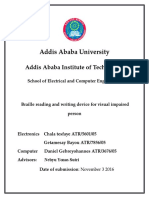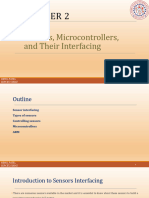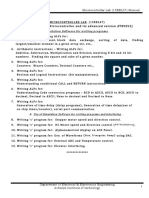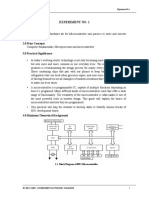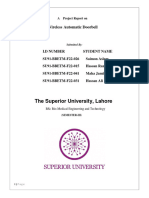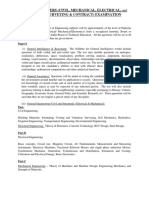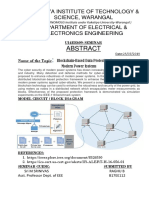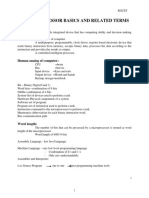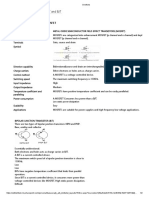60% found this document useful (5 votes)
3K views13 pagesWireless Doorbell Using Arduino
This document describes a wireless doorbell project using an Arduino, RF transmitter and receiver modules, and other components. The transmitter circuit sends a signal when the button is pressed, which is received by the receiver circuit connected to an Arduino. The Arduino is programmed to activate a buzzer when it detects the signal, replicating the function of a traditional wired doorbell wirelessly. Potential applications are listed as well as advantages over other wireless technologies and room for future improvements like integrating sensors and cameras.
Uploaded by
Praveen Kumar pkCopyright
© © All Rights Reserved
We take content rights seriously. If you suspect this is your content, claim it here.
Available Formats
Download as PPTX, PDF, TXT or read online on Scribd
60% found this document useful (5 votes)
3K views13 pagesWireless Doorbell Using Arduino
This document describes a wireless doorbell project using an Arduino, RF transmitter and receiver modules, and other components. The transmitter circuit sends a signal when the button is pressed, which is received by the receiver circuit connected to an Arduino. The Arduino is programmed to activate a buzzer when it detects the signal, replicating the function of a traditional wired doorbell wirelessly. Potential applications are listed as well as advantages over other wireless technologies and room for future improvements like integrating sensors and cameras.
Uploaded by
Praveen Kumar pkCopyright
© © All Rights Reserved
We take content rights seriously. If you suspect this is your content, claim it here.
Available Formats
Download as PPTX, PDF, TXT or read online on Scribd
/ 13









